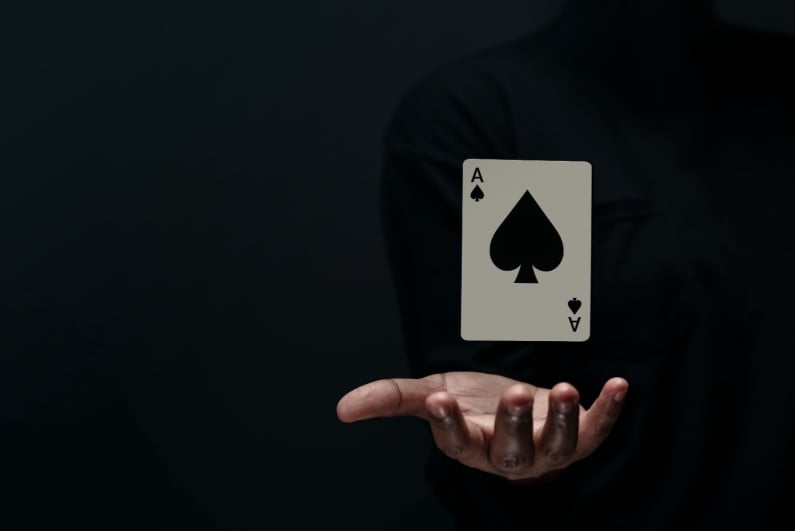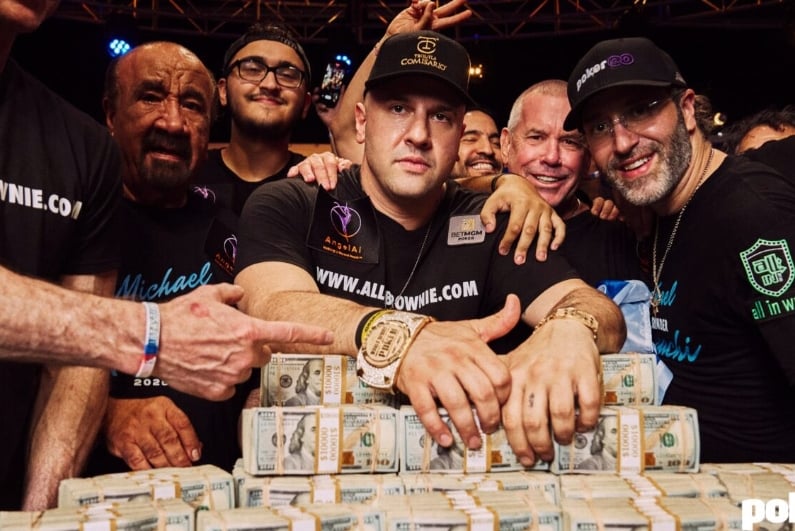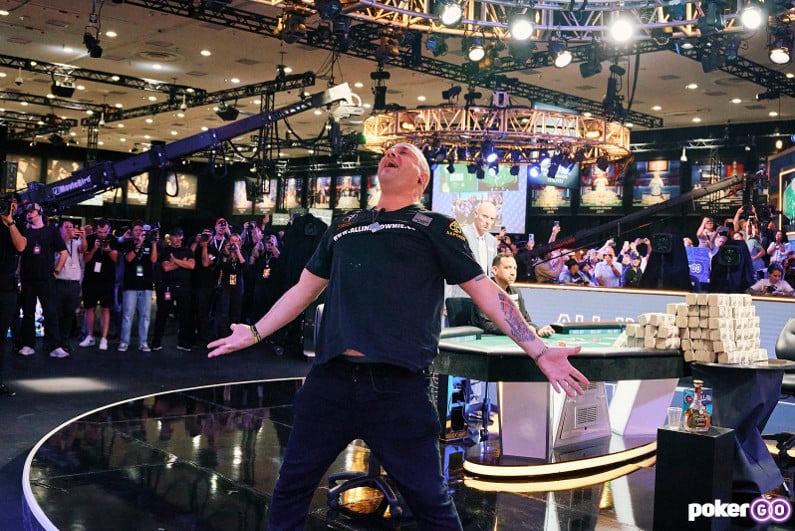When I play poker live, I jot down the details of every hand I play so I can review them when I have time. In this article, I will look back at the most interesting hand I played on my recent trip to Malta. I’ll give you the chance to decide what you would have done at each decision point, then examine the options from a GTO perspective, and any potential worthwhile exploits we might consider.
It’s late on day one with the bubble looming when a short stack playing 17 bbs UTG1 opens to 2bb. He has been quite active.
some habitual squeezers are lurking in the wings
I have A♠A♥ in the cutoff with 60 bbs. Stacks behind vary, and some habitual squeezers are lurking in the wings.
What’s your play?
A. Call
B. Raise to 4bb
C. Raise to 5bb
D. All in
GTO: This is a spot a lot of players don’t fully understand. They’ll flat stuff like JT♠ and 77, which is fine, but if these are the only flats you have your range is capped both preflop (leaving you vulnerable to squeezes) and on most flops. To prevent this, you absolutely need to flat some very strong hands like AA (all the time) and KK (some of the time).
Beyond GTO: Against opponents opening too wide (as this one seemed to be) and with habitual squeezers lurking behind, there’s even more incentive to flat Aces.
I call. Everyone behind folds.
Flop:
Q♠ 8♥ 4♦
He checks. Pot size is now 6.5 bbs.
What’s your play?
A. Check
B. B20 (bet 20%)
C. B33
D. B66
GTO: There’s no real reason to bet big on this board. Our range and hand wants to mix checks, tiny bets and small bets.
I definitely want to start getting money in
Beyond GTO: My aggressive opponent was likely to bet if he hit this board, so I heavily discounted Qx. He might have a set but if he does I’m likely doubling him up anyway, so my only real concern is how to get the money in over three streets again at weaker hands like decent pairs. I definitely want to start getting money in, but chose the tiny size to make sure he calls everything.
I b20. He calls. Pot size is now 9.1 bbs.
Turn:
5♥
He checks
What’s your play?
A. Check
B. B33
C. B55
D. All-in
GTO: The solver throws in some checks for range protection, but our hand clearly wants you to bet again, and the solver does this 90% of the time. The board has gotten wetter so the small size doesn’t make much sense any more: our value wants to bet a size in or around half pot that allows us to shove cooperative rivers for the same size. By sizing up a tad that allows us to keep barreling more bluffs than if we used a smaller size.
Beyond GTO: By now my physical read was my opponent was unhappy with his lot and hanging on reluctantly. I therefore considered using a small size again but rejected it for two reasons:
(1) there are too many bad rivers now where my opponent might fold or I might not even feel good about value shoving, and if I bet small now my river shove will be for pot and get more folds than I want.
(2) I thought my opponent’s calling range to the small bet and just over half pot was probably pretty inelastic, meaning that anything that’ll call the small bet will also call half pot. It’s even possible he might fold MORE often to the small bet if he interprets it as a milking bet.
I b55. He calls with apparent reluctance
River:
2♠
He checks slowly. Pot size 19.1 bbs. He has 8.7 bbs behind.
What’s your play?
A. Check
B. B10
C. B20
D. All-in
GTO: Our range really only wants to use one size, all in (which is only for 44% of pot), maximising value for our strong hands when called, and allowing us to bluff more often than if we use a smaller size.
I considered a smaller bet to ensure the call
Beyond GTO: Given the obvious discomfort my opponent was exuding, I considered a smaller bet to ensure the call. Live players often overfold to all ins, but this wasn’t a particularly big one. Even if my opponent does call more often if I say, use the b20 size, it has to be more than twice as often for that size to be higher Ev. In the end I decided that probably wasn’t true.
Results: I moved all in. He looked tortured before eventually slamming in the call and tabling Tens.
Post-hand discussion
After the hand, a player from Macedonia at the other end of the table commented to his neighbours:
“Flat with aces. He plays like the old men in my home game.” From this I inferred he disapproved of the play, an opinion reinforced when he responded to one of his neighbor’s joking “Maybe you should invite him to your game” with: “He’s welcome any time!”
In his defense, he admitted he was a cash player who didn’t play tournaments a lot and wasn’t too studied in short stack play, and I think even a lot of experienced players hate flatting Aces in spots like this, fearing it sets them up to get bad beat. When I posted a poll on Twitter asking what people would do, over half said they wouldn’t flat, and one player commented: “The 46% of the 382 voters who chose “call” never get to tell another “bad beat aces cracked” story everaf*ckinggain!!”
don’t be afraid to risk some bad beat pain
People play poker for different reasons, and if you are one of those who finds “bad beats” particularly painful and wants to play in such a way as to minimize the number you suffer as opposed to simply trying to maximise your long term profits, then by all means go ahead and raise preflop. But if you want your results to improve and your profits to increase in the long term, don’t be afraid to risk some bad beat pain and learn to flat Aces in spots like this!




